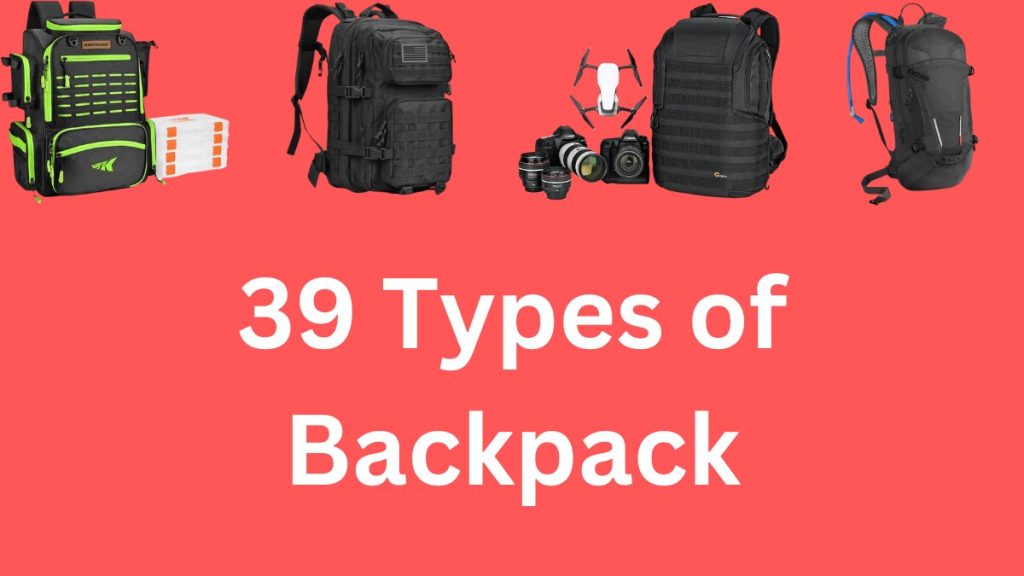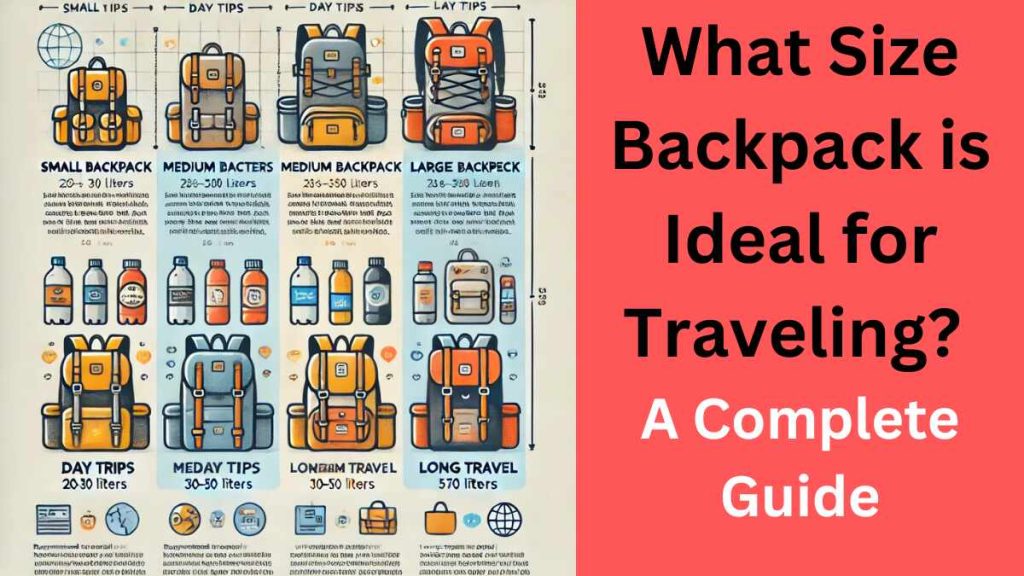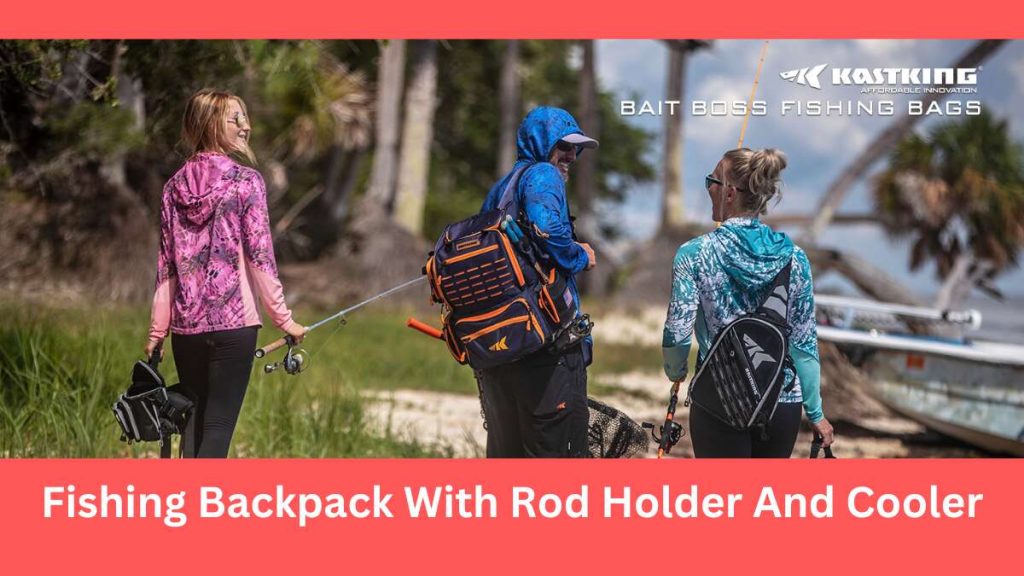In the world of travel, outdoor adventure, and daily life, backpacks have become an indispensable companion. They come in a multitude of shapes, sizes, and designs, each tailored to meet specific needs and preferences. Whether you’re a hiker seeking a rugged, weather-resistant pack, a student in search of a stylish and functional school bag, or a globetrotter looking for the perfect travel companion, the diversity of backpack options available is vast. In this post, we’ll explore the list of different types of backpacks, each designed to cater to distinct purposes, offering a glimpse into the wide range of options that cater to different lifestyles and activities.
Introduction
Backpacks have become an indispensable part of our lives, serving a multitude of purposes. Here, we will delve into the significance of backpacks, their historical evolution, and the primary aim of this article.
Why Backpacks Are Essential
Backpacks have evolved to be essential accessories for various reasons. They offer convenience, versatility, and comfort that other types of bags often lack. The ability to carry your belongings comfortably on your back while keeping your hands free is a game-changer. From students to travelers, hikers to professionals, backpacks serve as reliable companions in daily life and adventures.
The Evolution of Backpacks
The history of backpacks is a fascinating journey that has witnessed significant transformation. From simple animal hides and baskets used by our ancestors to the modern, technologically advanced designs, backpacks have come a long way. They have adapted to meet the diverse needs of humanity, with innovative features and materials that enhance their functionality.
Purpose of the Article
The purpose of this article is to provide readers with a comprehensive understanding of the different types of backpacks available in today’s market. By exploring the various categories, features, and considerations when choosing a backpack, we aim to assist you in making an informed decision when selecting the ideal backpack for your specific needs. Whether you’re a student, a hiker, a traveler, or someone in search of a stylish yet functional bag, this article will guide you towards the perfect backpack for your lifestyle.
list of different types of backpacks
1. Backpacks by Design
When it comes to backpacks, they are not one-size-fits-all. Various designs cater to specific needs and activities.
A. Standard Backpacks
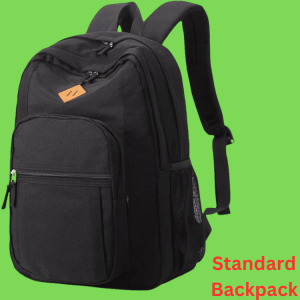
Standard backpacks are versatile and widely used for everyday purposes. They come in various sizes and styles, making them suitable for both students and professionals. Standard backpacks typically feature a spacious main compartment, a front pocket for smaller items, and adjustable shoulder straps for comfort. They are an excellent choice for carrying books, electronics, and personal items.
B. Daypacks

Daypacks are compact and lightweight backpacks designed for short outings and day trips. They are perfect for carrying essentials like water bottles, snacks, a camera, and a light jacket. Daypacks often have minimal internal organization to keep them simple and lightweight. They are popular among hikers, tourists, and anyone who needs a small, convenient bag for short adventures.
C. Hiking Backpacks
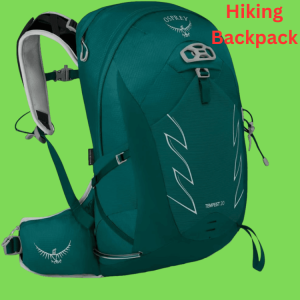
Hiking backpacks are specifically engineered for outdoor enthusiasts. These backpacks come in various sizes, from small day-hiking packs to larger multi-day hiking backpacks. They include features like hydration reservoir sleeves, adjustable straps for securing gear, and a rugged build to withstand the rigors of the trail. Hiking backpacks prioritize comfort and functionality, making them ideal for extended journeys in the great outdoors.
D. Travel Backpacks
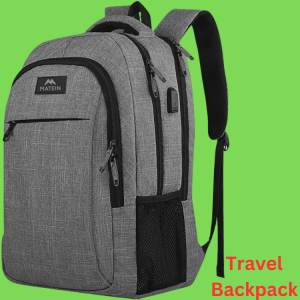
Travel backpacks are designed to accommodate the needs of travelers. They often feature a clamshell design, which allows the backpack to be fully unzipped for easy packing and access. Many travel backpacks are carry-on compliant and come with multiple compartments for efficient organization. They are popular among backpackers and business travelers who need a versatile and compact luggage solution.
E. Laptop Backpacks
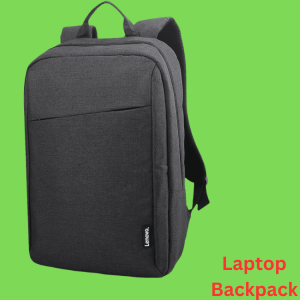
Laptop backpacks cater to individuals who need to carry their computers and other tech gear. These backpacks typically have a dedicated padded compartment for laptops or tablets. They come in various sizes to accommodate different laptop sizes and often include additional pockets and organizers for cables and accessories. Laptop backpacks are favored by students and professionals who require both mobility and protection for their electronic devices.
Each type of backpack design serves a unique purpose, and choosing the right one depends on your specific needs and activities. Whether you’re heading to school, exploring the great outdoors, or traveling the world, there’s a backpack designed just for you.
2. here is a list of backpacks made by differnt types of Material
The choice of material for a backpack plays a significant role in its durability, weight, and overall performance. Different materials offer distinct advantages, making it essential to consider your specific needs when selecting a backpack. Now, we’ll explore some common backpack materials.
A. Canvas Backpacks
Canvas backpacks are known for their durability and ruggedness. Canvas is a heavy-duty fabric made from cotton and is often treated to be water-resistant. Canvas backpacks can withstand wear and tear, making them ideal for outdoor activities and heavy use. They have a classic and timeless appearance and are suitable for individuals who prefer a more traditional and robust backpack.
Pros:
- High durability and resistance to abrasion.
- Classic and stylish appearance.
- Reliable for outdoor and adventure use.
- Eco-friendly, as cotton is a natural fiber.
Cons:
- Can be heavier compared to some synthetic materials.
- May require maintenance to retain water resistance.
B. Leather Backpacks
Leather backpacks are synonymous with luxury and elegance. They are often chosen for their stylish appearance and high-quality craftsmanship. Leather is a durable material that can last for many years, gaining character and patina with age. Leather backpacks are favored by professionals and those who prioritize fashion alongside functionality.
Pros:
- Exceptional durability and longevity.
- Luxurious and timeless appearance.
- Develops a unique patina over time.
- Well-suited for professional and formal settings.
Cons:
- Typically more expensive than other materials.
- May require regular maintenance, such as conditioning.
- Can be heavier than some synthetic alternatives.
C. Nylon Backpacks
Nylon backpacks are lightweight and versatile. Nylon is a synthetic material known for its strength and resistance to wear and tear. These backpacks are favored for their ability to repel water, making them an excellent choice for outdoor activities and travel. They come in a wide range of styles, from basic daypacks to high-performance hiking backpacks.
Pros:
- Lightweight and easy to carry.
- Resistant to moisture and water.
- Available in various designs and styles.
- Suitable for outdoor and adventure use.
Cons:
- May lack the classic appearance of canvas or leather.
- Durability can vary depending on the quality of the nylon used.
D. Backpacks made by Polyester
Polyester backpacks are common and cost-effective. Polyester is a synthetic material that is lightweight and readily available. These types of backpacks are often chosen for their affordability and ease of care. While they may not be as durable as some other materials, they are suitable for casual use, such as carrying books or gym gear.
Pros:
- Affordable and budget-friendly.
- Lightweight and easy to maintain.
- Available in a wide range of colors and styles.
- Suitable for everyday use and school.
Cons:
- Generally less durable than canvas, leather, or nylon.
- Limited water resistance compared to some materials.
- May not withstand heavy outdoor use.
When selecting a backpack, consider the material that best aligns with your intended use and personal preferences. Each material has its unique characteristics and can significantly impact the overall performance and appearance of your backpack. Whether you prioritize durability, style, or affordability, there’s a material that suits your needs.
3. Specialized Backpacks
In addition to standard backpacks and their various materials, there are list of different specialized types of backpacks tailored to specific activities and needs. These specialized backpacks are designed to provide optimal functionality for particular purposes. Let’s take a closer look at some of them:
A. Hydration Packs
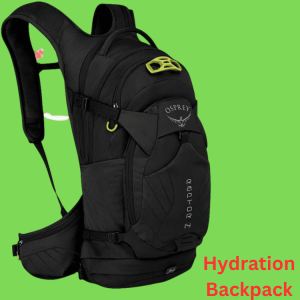
Hydration packs are built for one primary purpose: keeping you hydrated during physical activities. These backpacks come with a built-in water reservoir and a hose for convenient sipping. They are designed for activities like hiking, cycling, and running, where easy access to water is crucial. Hydration packs are often compact and lightweight, with enough space to carry essentials like energy bars and a small first-aid kit.
B. Camera Backpacks
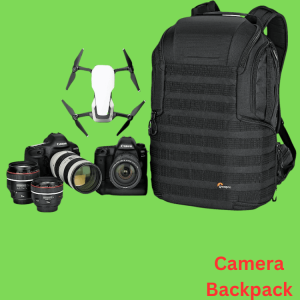
Camera backpacks are essential for photographers and videographers who need to transport their camera gear safely. These backpacks are equipped with padded compartments and dividers to protect fragile equipment like cameras, lenses, and drones. They also offer various pockets for organizing accessories, such as memory cards, batteries, and tripods. Camera backpacks provide easy access to gear and ensure it remains secure during travel or outdoor shooting.
C. Tactical Backpacks
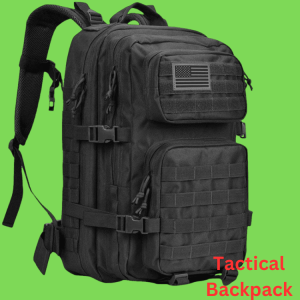
Tactical backpacks are designed for military and law enforcement personnel but have gained popularity among outdoor enthusiasts. They are built to withstand tough conditions and heavy loads. Tactical backpacks typically feature MOLLE (Modular Lightweight Load-carrying Equipment) webbing for attaching additional gear, making them highly customizable. They are ideal for outdoor adventures, camping, and survival activities.
D. Cycling Backpacks
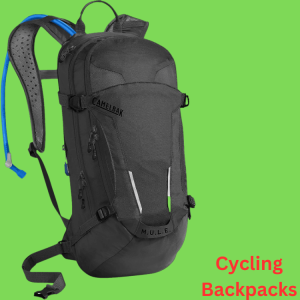
Cycling backpacks are engineered for bikers and commuters who need a convenient way to carry their essentials while on the move. These backpacks are lightweight and often feature aerodynamic designs. They may include features such as hydration reservoir sleeves, reflective elements for safety, and compartments for storing cycling accessories. Cycling backpacks are designed for comfort and stability during rides.
E. Fishing Backpacks
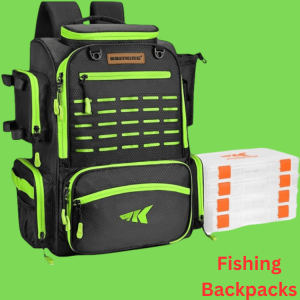
Fishing backpacks cater to anglers who require specialized storage for their fishing gear. These backpacks typically come with features like rod holders, waterproof compartments, and plenty of pockets for organizing tackle, lures, and fishing tools. Fishing backpacks are designed to be convenient for anglers, allowing them to carry their equipment to the best fishing spots.
These specialized backpacks are tailored to the unique needs of specific activities, ensuring that you have the right equipment to pursue your hobbies and interests. Whether you’re an avid photographer, an outdoor enthusiast, or a dedicated angler, there’s a specialized backpack designed to make your pursuits more enjoyable and organized.
4. list of different types of Backpacks by Capacity
Backpacks come in various sizes to accommodate different amounts of gear, belongings, and equipment. The capacity of a backpack is a critical consideration when choosing the right one for your needs. Let’s delve into the various sizes of backpacks based on their capacity:
A. Small Backpacks
Small backpacks are compact and typically have a capacity of 10 to 20 liters. These are ideal for short trips, day hikes, and light travel. They are often used as daypacks for carrying essentials like water, snacks, a light jacket, and personal items. Small backpacks are convenient for those who want a lightweight and minimalist option.
B. Medium Backpacks
Medium backpacks have a capacity ranging from 20 to 40 liters. They strike a balance between compactness and storage space. Medium-sized backpacks are suitable for a wide range of activities, including day trips, weekend getaways, and urban commuting. They provide enough room for clothing, electronics, and additional essentials.
C. Large Backpacks
Large backpacks have a capacity of 40 to 70 liters, making them well-suited for extended trips, multi-day hikes, and backpacking adventures. These backpacks offer ample storage for clothing, camping gear, and supplies. They often feature multiple compartments and pockets for organized packing. Large backpacks are designed for those who require substantial space for extended journeys.
D. Extra-Large Backpacks
Extra-large backpacks have a capacity of 70 liters or more, and they are designed for serious adventurers, such as long-distance hikers, backpackers, and those going on expeditions. These backpacks can carry a significant amount of gear and equipment, including tents, sleeping bags, cooking supplies, and more. Extra-large backpacks are built for the most demanding outdoor excursions.
The size of your backpack should align with the length of your trips and the amount of gear you need to carry. Choosing the right capacity ensures that you have the right amount of space without overburdening yourself. Whether you’re embarking on a short day hike or a lengthy expedition, there’s a backpack size that suits your needs.
5. Fashion backpacks list that Meets differnet types of Function
Backpacks have evolved beyond just utility; they’ve become fashion statements in their own right. These stylish backpacks blend fashion with function, allowing individuals to express their personal style while meeting their practical needs. Let’s delve into some fashionable backpack categories:
A. Trendy Backpacks
Trendy backpacks are designed to keep up with the latest fashion trends. These backpacks often feature contemporary colors, patterns, and designs that cater to the fashion-forward crowd. Trendy backpacks can come in various sizes and are suitable for everyday use, offering a stylish way to carry your essentials.
B. Vintage Backpacks
Vintage backpacks harken back to a different era, often with designs and materials reminiscent of the past. They offer a nostalgic and classic aesthetic that appeals to those who appreciate retro styles. Vintage backpacks may feature leather accents, canvas materials, and old-school buckles, creating a timeless look.
C. Designer Backpacks
Designer backpacks are the epitome of luxury and style. These backpacks are crafted by renowned fashion houses and are often adorned with logos and distinctive designs. While they can be quite expensive, designer backpacks are sought after for their high-quality materials, craftsmanship, and exclusivity. They are a statement of sophistication and elegance.
D. Transparent Backpacks
Transparent backpacks have gained popularity for their unique and edgy appearance. These backpacks are typically made of clear PVC material, allowing you to showcase the contents of your bag. While they may not offer privacy, they are a bold and distinctive choice for those who want to make a statement.
Fashion-forward individuals can now find backpacks that reflect their personal style while serving practical purposes. Whether you’re looking for a trendy and modern design, a vintage-inspired look, a high-end designer label, or a transparent and unconventional choice, there’s a fashionable backpack that caters to your preferences. These backpacks go beyond mere utility; they are accessories that complement your fashion sense.
6. list of Features and Compartments available in different types of backpacks
The features and compartments of a backpack play a crucial role in its usability and suitability for various purposes. Different backpacks come with specific features that cater to the needs of their users. Let’s delve into some of these important features and compartments:
A. Organizational Pockets
Organizational pockets are designed to help you keep your belongings tidy and easily accessible. These pockets come in various sizes and can be found in different parts of the backpack, including the main compartment, front pockets, and side pockets. They are perfect for stashing small items like keys, pens, and electronics, ensuring that everything has its designated place.
B. Anti-Theft Features
Anti-theft features are essential for travelers and urban commuters. These features include hidden or lockable zippers, RFID-blocking compartments, and cut-resistant straps. Anti-theft backpacks are designed to protect your belongings from pickpockets and unauthorized access, providing peace of mind while on the go.
C. Ergonomic Design
Ergonomic design focuses on comfort and functionality. Backpacks with ergonomic features have padded shoulder straps, adjustable sternum straps, and a ventilated back panel. They are engineered to distribute the weight evenly and reduce strain on your shoulders and back. Ergonomic backpacks are ideal for activities that require extended wear, such as hiking and travel.
D. Waterproof Backpacks
Waterproof backpacks are essential for outdoor enthusiasts and anyone who encounters wet conditions. These backpacks are made with waterproof or water-resistant materials, ensuring that your gear remains dry even in the rain. Waterproof backpacks are often sealed with water-resistant zippers and come with rain covers for added protection.
E. Insulated Backpacks
Insulated backpacks are designed for those who need to carry food and beverages while keeping them at the desired temperature. These backpacks come with insulated compartments, perfect for storing items like snacks, lunches, or drinks. They help maintain the temperature of the contents, whether hot or cold, making them ideal for picnics, hiking, or camping.
The choice of features and compartments in a backpack depends on your specific needs and activities. Whether you require enhanced organization, anti-theft security, ergonomic comfort, weather protection, or temperature control, there’s a backpack with the right features to make your life more convenient and enjoyable.
7. list of Backpacks for different types of Activities
Backpacks are designed to cater to the specific needs of various activities and lifestyles. Choosing the right backpack for your intended use ensures that you have a reliable companion for your endeavors. Let’s delve into some backpacks tailored for specific activities:
A. School Backpacks
School backpacks are a staple for students of all ages. They are designed to carry textbooks, notebooks, school supplies, and often a laptop or tablet. School backpacks come in various sizes, offering compartments for organized storage. They are typically durable and comfortable for everyday use, making them an essential accessory for students.
B. Camping Backpacks
Camping backpacks are engineered for outdoor enthusiasts who embark on camping, hiking, or backpacking adventures. These backpacks come in different sizes to accommodate various trip durations. Camping backpacks prioritize durability, comfort, and storage space for camping gear, clothing, and food. They often feature external attachment points for additional equipment like sleeping bags or tents.
C. Business Backpacks
Business backpacks are designed for professionals who need to carry work-related items, such as laptops, documents, and personal essentials. These backpacks often come with a dedicated padded compartment for laptops, as well as organizational pockets for business accessories. They offer a sleek and professional appearance, making them suitable for office settings.
D. Gym Backpacks
Gym backpacks are tailored to fitness enthusiasts who frequent the gym or exercise outdoors. These backpacks often have a separate compartment for workout gear, such as gym clothes and shoes. Many gym backpacks also include pockets for water bottles, headphones, and other fitness accessories. They are designed for convenience and style while on the move.
Each of these backpacks is optimized for its intended activity, ensuring that you have the necessary features and compartments to meet your specific requirements. Whether you’re a student, an outdoor adventurer, a professional, or a fitness enthusiast, there’s a backpack designed to make your activities more comfortable and efficient.
8. Travel backpacks list suitable for different kind of advantures
Travelers often have distinct requirements when it comes to backpacks. Whether it’s ease of transport, efficient packing, or versatility, there are various travel-specific backpacks to choose from. Let’s explore some of the most common options:
A. Carry-On Backpacks
Carry-On backpacks are designed to meet the size requirements for airline carry-on luggage. These backpacks are compact, ensuring they can be taken into the cabin of an aircraft without the need to check them. They typically have multiple compartments and pockets for organized packing. Carry-on backpacks are perfect for short trips and weekend getaways.
B. Rolling Backpacks
Rolling backpacks combine the convenience of a backpack with the ease of rolling luggage. These backpacks come with built-in wheels and a retractable handle, allowing you to roll them like traditional suitcases. This design is excellent for travelers who prefer not to carry the weight on their backs when navigating airports or city streets.
C. Duffel Bag Backpacks
Duffel bag backpacks offer the versatility of both a duffel bag and a backpack. They feature both carry handles and backpack straps, allowing you to carry them in multiple ways. Duffel bag backpacks are spacious and suitable for various types of trips, whether you’re heading to the gym, going on a road trip, or traveling by plane.
D. Convertible Backpacks
Convertible backpacks are highly adaptable and can be used in different ways. These backpacks often feature detachable components, such as daypacks that can be removed or worn separately. They are excellent for travelers who require flexibility and the ability to adjust their backpack to different travel situations.
Each of these travel-specific backpacks addresses the unique needs and preferences of travelers. Whether you want to ensure your backpack fits in the cabin, prefer the convenience of wheels, seek a versatile option, or need a backpack that can adapt to your journey, there’s a travel backpack designed to make your travels more efficient and enjoyable.
9. Eco-Friendly Backpacks
Eco-friendly backpacks are designed with the environment in mind, focusing on sustainability, recycling, and conscious manufacturing. Let’s delve into the different aspects of eco-friendly backpacks:
A. Sustainable Materials
Sustainable materials are at the core of eco-friendly backpacks. These backpacks are crafted from materials that are responsibly sourced and environmentally friendly. Examples of sustainable materials include organic cotton, hemp, and recycled plastics. The use of sustainable materials reduces the ecological footprint of the backpack and helps conserve natural resources.
B. Recycling and Upcycling
Recycling and upcycling are practices that eco-friendly backpack manufacturers employ to reduce waste. Some backpacks are made from recycled materials, such as reclaimed plastic bottles, discarded textiles, or repurposed fabrics. Upcycling involves taking existing materials and transforming them into something new and useful, extending the life cycle of materials that would otherwise go to waste.
C. Eco-Conscious Brands
Eco-conscious brands are companies that prioritize environmentally responsible practices in their manufacturing and sourcing. These brands often have certifications, such as Fair Trade, Global Organic Textile Standard (GOTS), or bluesign®, which ensure that the backpacks meet high environmental and ethical standards. Choosing backpacks from eco-conscious brands supports sustainable and ethical practices.
Eco-friendly backpacks allow individuals to make environmentally responsible choices without sacrificing quality and functionality. These backpacks align with the growing movement towards sustainability and offer a greener alternative for consumers who want to minimize their impact on the planet. Whether through the use of sustainable materials, recycling, or supporting eco-conscious brands, eco-friendly backpacks provide a way to make more sustainable choices in everyday life.
10. Customization and Personalization
Customizing and personalizing backpacks allows individuals to make their bags unique and tailored to their tastes. Here are some popular ways to add a personal touch to your backpack:
A. Monogrammed Backpacks
Monogrammed backpacks feature personalized initials, names, or symbols on the bag’s surface. This customization adds a distinctive and personalized touch to your backpack, making it easily identifiable as yours. Monogramming is a classic and elegant way to make a statement.
B. DIY Backpack Modifications
DIY backpack modifications involve making alterations to your backpack to suit your specific needs. This can include adding extra pockets, attaching patches, or modifying straps and zippers. DIY modifications allow you to enhance the functionality and appearance of your backpack according to your preferences.
C. Custom Embroidery
Custom embroidery is a creative way to add unique designs, logos, or artwork to your backpack. Embroidery can be done on various parts of the bag, such as the front pocket or shoulder straps. Custom embroidery provides a visually appealing and personalized touch to your backpack.
Personalizing your backpack is a fun and creative way to make it truly your own. Whether through monogramming, DIY modifications, or custom embroidery, customization adds character and individuality to your backpack. It’s an opportunity to express your style, interests, and identity while ensuring your backpack is as unique as you are.
The Anatomy of a Backpack
Understanding the various elements that make up a backpack is essential for choosing the right one to meet your needs. Let’s explore the list of key components that define the anatomy of a different types of backpacks:
A. Straps and Harness
The straps and harness of a backpack are crucial for comfort and load distribution. They include shoulder straps, sternum straps, and hip belts. Shoulder straps evenly distribute the weight of the backpack across your shoulders, while sternum straps and hip belts help stabilize the load and reduce strain on your back during extended wear.
B. Zippers and Closures
Zippers and closures are used to access the compartments and pockets of the backpack. High-quality zippers ensure smooth and secure access to your belongings. Some backpacks feature lockable zippers for added security, while others use drawstrings, buckles, or magnetic closures for different purposes.
C. Bottom Compartment
Many backpacks, especially those designed for outdoor activities, have a bottom compartment that is separate from the main compartment. This compartment is typically used to store items like sleeping bags, wet gear, or shoes, keeping them separate from the rest of your belongings.
D. Back Padding
Back padding is located on the side of the backpack that rests against your back. This padding provides comfort and helps to reduce pressure points and chafing. Ventilated back padding with airflow channels enhances breathability, making it particularly important for hikers and those in warm climates.
E. Ventilation Systems
Ventilation systems are designed to promote airflow and reduce perspiration buildup on your back. These systems often include mesh panels or suspended mesh back panels that create a gap between your back and the backpack. Proper ventilation helps keep you cool and comfortable, especially during physical activities.
Understanding the anatomy of a backpack allows you to assess the design and features of different models, ensuring that your chosen backpack aligns with your needs and preferences. Whether it’s the harness for comfort, zippers for accessibility, a bottom compartment for organization, back padding for comfort, or ventilation for breathability, each component plays a vital role in the overall functionality and comfort of the backpack.
Choosing the Right one from the list of different types of backpacks
Selecting the right backpack involves careful consideration of several important factors. Here are key aspects to keep in mind when choosing the ideal backpack for your needs:
A. Size Considerations
Size considerations are crucial when choosing a backpack. Determine the volume and capacity you require based on the activities you’ll be engaged in. Smaller backpacks are suitable for day trips and light loads, while larger ones are better for extended travel and outdoor adventures. Choose a size that comfortably accommodates your essentials without being excessively large or heavy.
B. Activity-Specific Features
Consider the activity-specific features you need in a backpack. Different activities require different functionalities. For instance, if you’re a hiker, look for a backpack with hydration reservoir compatibility and multiple compartments for gear organization. For travel, opt for features like lockable zippers and carry-on compliance. Understanding your specific needs and choosing a backpack with features that align with your activities is vital.
C. Budgeting for Backpacks
Set a budget for your backpack purchase. Backpacks come in a wide price range, and your budget will help you narrow down your options. Keep in mind that higher-priced backpacks often come with better materials, construction, and features. However, there are affordable backpacks that offer good value for your money. Consider your budget while ensuring the backpack meets your requirements.
D. Brand and Warranty
Pay attention to the brand and the warranty offered with the backpack. Established brands often have a reputation for quality and durability. Additionally, a good warranty ensures that you are protected in case of defects or issues with the backpack. Research the brand’s reputation and check the warranty terms to make an informed decision.
Choosing the right backpack requires a thoughtful evaluation of size, activity-specific features, budget, and the brand’s reputation. Keep in mind that the perfect backpack is the one that aligns with your needs, style, and comfort. Whether you’re planning a hiking trip, preparing for school, or embarking on a new adventure, the right backpack will enhance your experience and make your journey more enjoyable.
Maintaining Your Backpack
Proper maintenance is essential to ensure that your backpack remains in good condition, ready to serve you for many adventures. Here are some list of tips for maintaining your different types of backpacks:
A. Cleaning and Care Tips
- Regular Cleaning: Clean your backpack periodically to remove dirt, stains, and odors. Use a damp cloth, mild soap, and warm water to spot clean the exterior. For deep cleaning, check the manufacturer’s care instructions.
- Empty and Air It Out: After each use, empty your backpack of its contents and leave it open to air out. This prevents the buildup of moisture and odors.
- Machine Washing: Some backpacks are machine washable, but always check the care label and follow the manufacturer’s instructions. Use a gentle cycle and cold water. Remove straps and other detachable components if possible.
- Drying: If you’ve washed your backpack, ensure it is completely dry before storing it. Avoid direct sunlight, as it may fade colors and damage materials.
- Stain Removal: For stubborn stains, consider using a fabric stain remover or specialized backpack cleaning products. Test in an inconspicuous area first.
B. Repairing Wear and Tear
- Inspect Regularly: Periodically inspect your backpack for signs of wear and tear, such as loose threads, fraying, or damaged zippers. Address issues as soon as you notice them to prevent further damage.
- Reinforce Stitching: If you spot loose stitches, repair them promptly using a strong nylon thread and a needle. Reinforcing weak areas can prevent them from worsening.
- Zipper Maintenance: Apply zipper lubricant to keep zippers moving smoothly. If a zipper is damaged or stuck, don’t force it. Gently work it back and forth to release the snag.
- Patch Holes: For small holes or tears, use fabric patches or adhesive to mend the damage. Be sure to follow the instructions on the product you choose.
C. Storage Recommendations
- Clean Before Storage: Ensure your backpack is clean and dry before storing it. This prevents mold and mildew growth during storage.
- Loosen Straps: Loosen all straps and adjustments to relieve tension on the materials and prevent deformities.
- Store Unpacked: Avoid storing your backpack packed for extended periods, as it can cause materials to lose their shape and compromise zippers and seams.
- Use a Dust Bag: If you have a dedicated dust bag or cover for your backpack, use it when storing. This protects the bag from dust and light exposure.
- Avoid Extreme Temperatures: Store your backpack in a cool, dry place away from extreme temperatures and direct sunlight. High heat can damage materials and cause them to deteriorate over time.
By following these cleaning, repair, and storage tips, you can extend the life of your backpack, keeping it in great condition for all your future adventures. Proper maintenance ensures that your backpack remains a reliable companion on your journeys.
Conclusion – list of different types of backpacks
In conclusion, the diverse array of backpacks showcased in this list highlights the incredible versatility and functionality that these essential accessories offer to people of all walks of life. From rugged hiking packs designed to conquer the great outdoors to sleek and stylish urban backpacks that complement a city lifestyle, there is a backpack for every need and taste.
Whether you’re a student, an adventurer, a professional, or a traveler, the right backpack can make a world of difference in your daily life. So, whether you’re in search of durability, comfort, organization, or style, this selection demonstrates that there’s a perfect backpack out there to suit your unique requirements and complement your individual personality.

